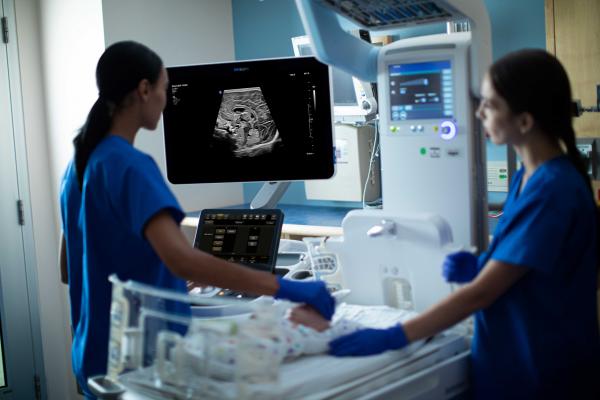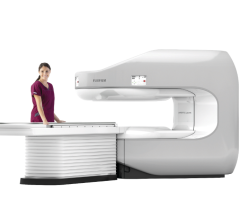
May 6, 2020 — Philips announced the ultimate ultrasound solution for pediatric assessment, the latest addition for its Philips Ultrasound System (EPIQ Elite). The new ultrasound solution provides clinicians with exceptionally detailed images and the performance they need to make a definitive diagnosis for pediatric patients, reducing the need for additional diagnostic imaging steps, such as X-ray imaging.
The new ultrasound solution from Philips is designed specifically for pediatric clinical use. It combines dedicated transducers, enhanced processing, and software tools that are optimized for the pediatric diagnostic workflow to help improve the experience of both young patients and staff. Children are more radiosensitive than adults, and efforts should be made to minimize risk by reducing unnecessary exposure to radiation [1]. So, a more gentle form of medical imaging is recommended when there is a clear indication for use.
“The new pediatric assessment solution on the EPIQ Elite system has elevated our ultrasound practice at Phoenix Children’s,” said Luis Goncalves, M.D., pediatric radiologist at Phoenix Children’s Hospital. “In particular, the solution’s new transducer offers exceptional clinical performance and versatility across many pediatric applications. For example, the intracranial detail we see in the neonatal head is truly exceptional.”
Pediatric patients come in all shapes and sizes. From the tiniest premature newborn baby to adult-sized pediatric patients, Philips offers a complete imaging solution to elevate diagnostic confidence in even the most challenging cases. The Philips ultimate ultrasound solution for pediatric assessment includes a new pediatric transducer, offering a 30% greater penetration [2] for more detailed images, and has a tailored pediatric workflow to help clinicians diagnose pediatric patients more quickly.
“Diagnostic confidence is vital for any clinician, especially when diagnosing the most sensitive patients,” said Jeff Cohen, vice president, and general manager General Imaging Ultrasound at Philips. “Philips ultimate ultrasound solutions provide the right level of image detail and context that clinicians need to make a precise diagnosis.”
The Philips ultimate ultrasound solution for pediatric assessment is cleared for pediatric clinical use. It extends Philips’ portfolio of dedicated solutions on the Philips Ultrasound System (EPIQ Elite) tailored to the needs of particular medical specialties. Ultrasound solutions for clinical use from Philips are available for the assessment of Small Parts, Liver, Vascular, Breast, and now Pediatrics.
Availability
Philips ultimate ultrasound solution for pediatric assessment and the Ultrasound System (EPIQ Elite) update are available globally [3].
[1] www.fda.gov/radiation-emitting-products/medical-imaging/pediatric-x-ray-imaging
[2] The new mC12-3 pediatric transducer offers 30% greater penetration in comparison to the previous generation
[3] Worldwide availability, excluding China and few other countries


 March 19, 2025
March 19, 2025 








